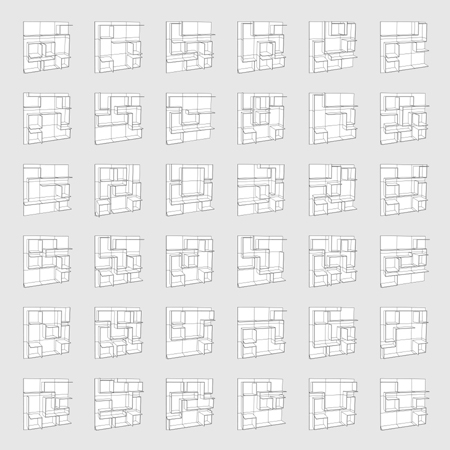Milan 08: at the furniture fair last month MDF Italia presented Vita interactive by Massimo Mariani, an infinitely variable, computer-generated storage system that can be customised to each client's requirements.
A specially developed computer program is used to generate an infinite number of configurations based on modules of 600x600mm, with variable shelf depths and orientations. The configuration can then be accessed and adjusted by the customer on the internet.
"The project represents a first attempt to link industrial design with advanced computational design, virtual interaction and the web," claims Mariani.
The system is supported on a steel frame which can be either wall mounted or floor standing.
A beta version of the interactive element designed by Christian Derix and Åsmund Gamlesæter at Aedas Research & Development can be played here and production will start later this year.
The following information is from Massimo Mariani:
--
Vita is a universal shelving system, made of square modules with shelves and boxes.
Each module measures 600x600mm, depth of shelves varying between 220mm and 330 mm, that of the boxes between 390mm and 540mm: the system is supported by a steel frame which can be hung to the wall or floor standing.
Modules are differentiated depending on depth of the shelves and dimension of the boxes: each one can be rotated according to the four main orientations. The particular geometry of the shelves gives each position a different purpose and a different dialogue with adjacent elements.
A specially designed program has been developed to optimize some internal rules of growth and adaptation in order to obtain an infinite number of ever changing and always functional configurations. The program is based on generative computational design techniques and exploits mathematical models of self-organising and recursive growth.
The interactive engine has implemented the program so that can be adjusted by the user to suit his own needs in terms of space, form, contents and price: it can calculate a preliminary virtual model based on some parameters such as dimension and outline of the space, distance from the floor and type of modules.
The engine also allows further adjustments and personalization: each composition can be completely or partially re-arranged according to functional requirements or even simple esthetical judgments.
Each configuration is expressed in its uniqueness by an identification code to facilitate the management of data for additional elaborations and research, order requests, price estimates.
The interactive engine has been designed by Christian Derix and Åsmund Gamlesæter at Aedas Research & Development, London.

